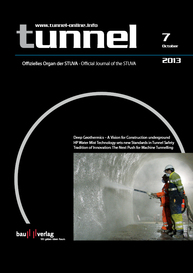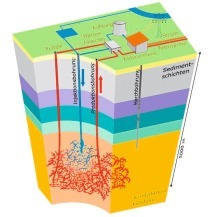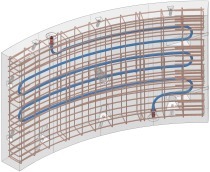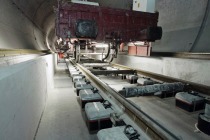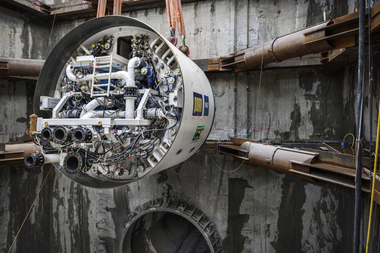Deep Geothermics – interdisciplinary Challenge promoting Innovations
A Vision for Construction undergroundThe deep geothermal exploitation of energy in the form of heat and electricity is bound to grow considerably in significance both ecologically and economically in future owing to the scarcity of fossil energy sources. This is also because the use as well as the generation of geothermal energy possesses major advantages when compared with all other kinds of sustainable forms of energy. Obtaining energy from the earth’s crust is possible 24 h/day, 365 days/year regardless of climatic conditions or weather patterns. Consequently deep geothermics represents an important source for providing baseload electricity and heat; at present this form of energy is only rarely exploited as a renewable source on account of the high drilling costs and contributes to the overall energy mix to a negligible extent.
The great advantage of generating energy from deep in the earth’s crust is that it is essentially available everywhere regardless of external environmental conditions and possesses a substantially greater life expectancy than solar or wind energy production. Furthermore, geothermal energy can be produced and obtained practically without CO2. It is produced by a purely physical process. In other words, no combustion or other chemical transformation takes place. Geothermal energy, which is numbered among the renewable forms, is incidentally the only one of these environmentally acceptable energies, with a baseload capacity.
By and large, when exploiting the earth’s heat using deep geothermics, a distinction is drawn between hydrothermal and petrothermal systems as well as between open and closed systems. These are dealt with at length in a separate report in this issue.
It represents a vision that practically all facilities devised to operate a geothermal power plant could be set up underground, resulting in minimal emissions for the environment. Geothermal energy production plants would thus require the smallest amount of surface space of all renewable energies.
In addition, when establishing a geothermal power plant synergies with other energy sources can be exploited so that the overall degree of efficiency is increased. One possibility would be to make use of the difference in height within the underground structures (e.g. covering peaks by means of a storage power plant) and to generate electricity via a turbine. Another conceivable method would be to take advantage of the difference of temperature, which results from differences in the density of the ventilation in the intake and outlet shafts. This air movement could possibly be exploited energetically by rotors.
In order to open up such sources of energy, drilling technologies are needed by means of which it is possible to arrive at the required depth. Nowadays drilling down to a depth of 7,000 m is state of the art in technical terms; however, depths of 5,000 m can be regarded as economically feasible.
Caverns with major cross-sections and relatively short length are needed for constructing and operating underground deep geothermal plants. They would be connected to the earth’s surface via headings or shafts. The choice of favourable cross-sectional forms, the application of excavation methods that go easy with the rock as well as selecting means of support as temporary and final securing measures are represented among the most vital tasks. In this connection, it should be mentioned that the deepest underground drill hole bored by the Prakla RB50, the largest deep drilling rig, reached 2,000 m. Larger and in turn more powerful drilling rigs require more space of course, so that they can be operated when set up underground, which naturally results in new challenges in logistical, safety technical, rock mechanical and geotechnical terms.
I am convinced that the generation that is active today should deal intensively with such a scenario regarding geological and geothermal location issues in order to exploit deep geothermal energy. Drilling technologies including the provision of the necessary infrastructures for sinking deep holes from an underground site must be developed, rock, operating and process parameters evolved as well as safety aspects appraised, which occur in the special case of existing or even newly set up underground facilities.
Finally the potential of deep geothermics and its risks have to be appraised both in technical and economic terms. Scientific as well as economic evaluation of the topic of deep geothermics calls for the interdisciplinary development of concepts and methods of all the disciplines involved. The research results obtained in this connection can be applied on a worldwide scale. On the one hand, deep geothermics is highly innovative and on the other, also risky, but would provide a series of findings, which will be of use in other fields, even if not crowned by success.


